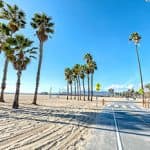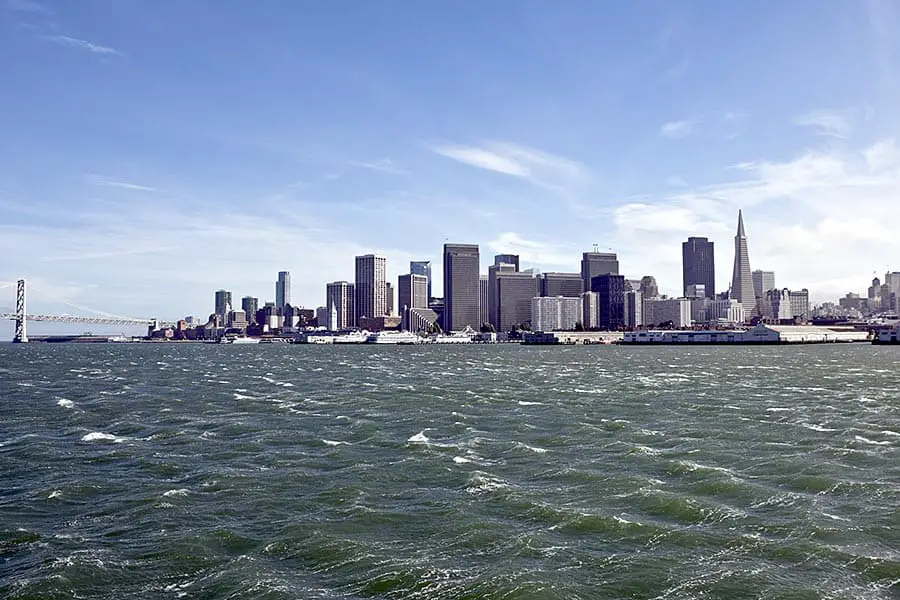
In addition to earthquakes and wildfires, the State of California is known for some unique weather patterns. Most of this is due to the diverse climates and landscapes found across the state. Each year, Southern California experiences strong windstorms known as the Santa Ana Winds. So, if you plan to take a trip to the Bay Area, you might be wondering, does San Francisco get Santa Ana Winds?
San Francisco doesn’t get Santa Ana Winds, but it experiences windstorms that are extremely similar to Santa Ana Winds. In Northern California, these winds are referred to as Diablo Winds. The primary difference between them is their name and the time of year in which they occur.
Before visiting the Bay Area, you should become familiar with any potential risks or hazards from weather or natural disasters. Please continue for more details on what causes Diablo Winds, their impact on the community, and how to remain safe.
Santa Ana Winds: Does San Francisco Have Them?
Each year, Southern California gets battered by a weather phenomenon called the Santa Ana Winds that produce strong gusts of wind as a result of a pocket of high-pressure air that forms over the Mojave Desert.
Like southern California, San Francisco and the Bay Area also experience a similar wind-creating weather pattern called the Diablo Winds. These winds are created in much the same way as Santa Ana Winds. The primary difference between the two is just in their name.
Diablo Winds affect many cities and communities in Northern California. However, the most substantial impacts are seen in the counties in the San Francisco Bay Area, including Contra Costa, Alameda, San Mateo, Solano, Marin, Santa Clara, Santa Cruz, Sonoma, and Napa Counties.
This area is home to nearly 8 million people, with many living in San Francisco, Oakland, and San Jose. So when the Diablo Winds blow, many people are affected.
While the winds don’t cause much damage on their own, homeowners across the Bay Area may discover large branches that have fallen from their trees or other debris, such as the neighbor’s patio furniture on the front lawn.
The most significant risk and impact from Diablo Winds are they provide the conditions that accelerate the severity of wildfires across the region.
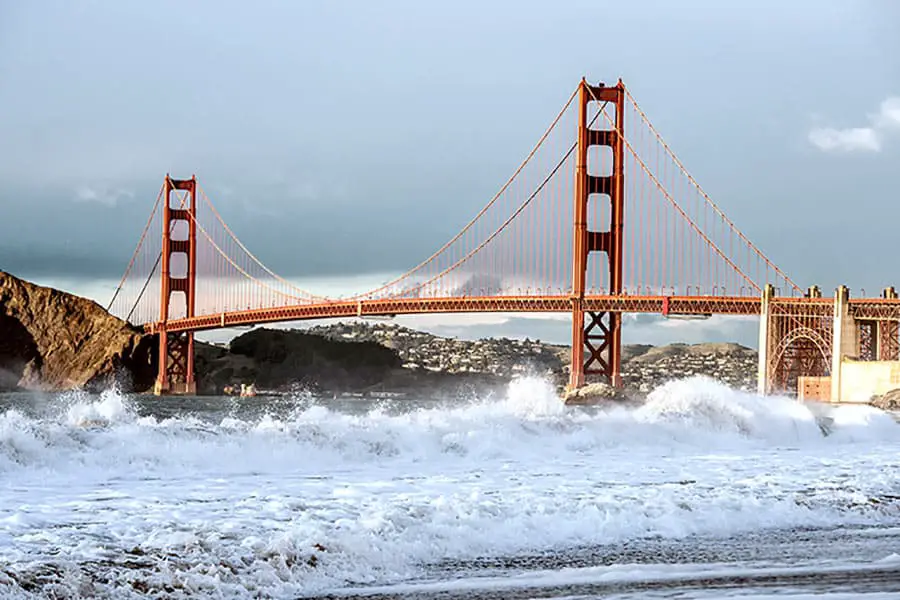
What are the Diablo Winds?
Diablo Winds are created from high-pressure air systems that build up over the Great Basin. The Great Basin is the most extensive watershed in North America, and it has no natural outlets. It covers parts of Idaho, Wyoming, Oregon, and Northern California.
As the pressure builds, it creates a jet stream that forces air from higher elevations, down the sides of the local mountains toward sea level. These mountains are a part of the Pacific Coastal Range which includes the Diablo Mountains and Santa Cruz Mountains.
The air pressure is lower at sea level, which creates little resistance to slow down the winds. In addition to speed, the air also increases in temperature as the barometric pressure shifts rapidly.
This change can result in an increased air temperature of up to 20 degrees by the time the air reaches the Bay. These conditions create long periods of sustained winds that can reach high speeds.
When are the Diablo Winds?
It is possible for Diablo Winds to occur throughout the year, but they are most common in the spring and fall when the weather is changing from hot to cold and vice versa.
Although wind speeds in the fall are the same, Diablo Winds during the later months are considered more dangerous as it coincides with the annual fire season, which typically runs from June through September.
How Strong are the Diablo Winds?
Diablo Winds can easily produce sustained winds of 40 miles per hour or more. If the conditions are just right, gusts can reach up to 100 miles per hour (which is equivalent to a Category 2 hurricane).
These perfect conditions are usually along mountain tops or in narrow canyons where the wind can rapidly accelerate.
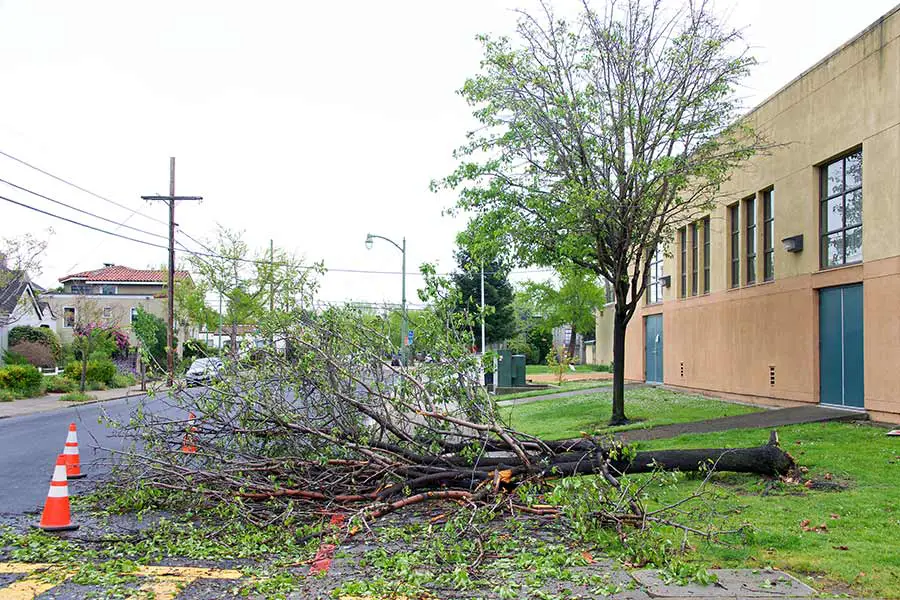
How Long do Diablo Winds Last?
Typically, Diablo Winds will last between 12 and 24 hours before they die down. There are a few instances where the winds last for several days each year. There may be a period of several weeks or even months between each occurrence of Diablo Winds.
Do Diablo Winds Cause Power Outages?
Public utilities in California put a lot of time and money into building their infrastructure to withstand extreme weather and other natural disasters.
Diablo Winds do sometimes cause power outages. While most power companies have a plan in place to mitigate and quickly restore power, they are not immune from outages caused by Diablo Winds. In many cases, these outages are a result of trees or branches that have fallen on power lines or transformers.
Some companies will even plan power outages when winds are high to reduce the risk of downed power lines causing a wildfire.
Bay Area Answers Fun Fact: The August Complex Fire in 2020 was the largest wildfire ever recorded in California, burning over a million acres (or 1% of all land in California). High winds and steep terrain made the fire extremely difficult to contain.
Other Posts of Interest
- Is It Better To Stay In Union Square Or Fisherman’s Wharf?
- Is Chinatown In San Francisco Worth Visiting?
- Is It More Expensive To Live In San Francisco Or Los Angeles?
- What Are The Painted Ladies In San Francisco?
Do Diablo Winds Cause Fires?
Diablo Winds play a significant role in the spread and severity of wildfires in Northern California. While some fires can start as a result of wind conditions like downed powerlines or sparks carried from a campfire, many fires start due to other causes such as human negligence and lightning.
Diablo Winds contribute to wildfires by creating the ideal conditions for fires. First, they bring warm, dry air, which dries out already flammable brush and plant life.
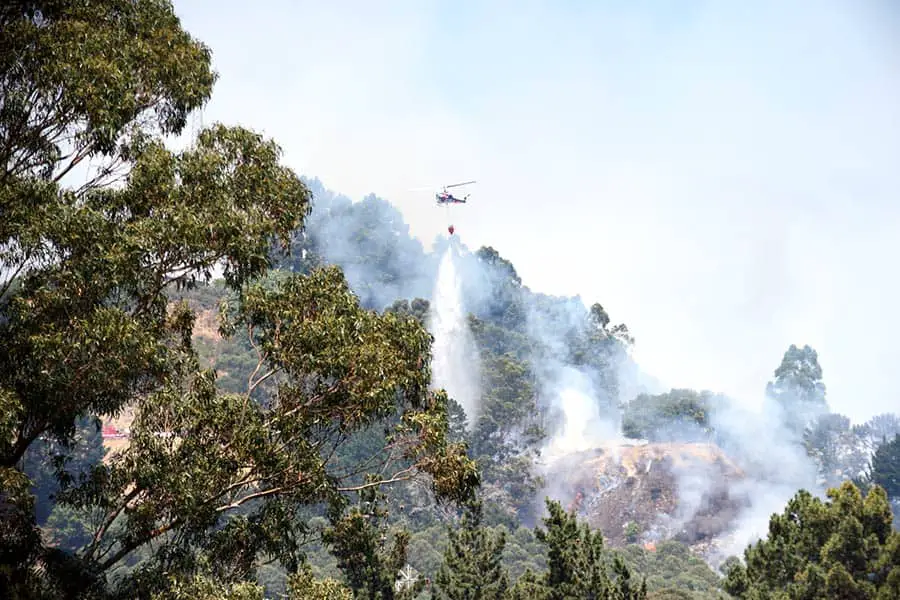
Also, once the fire has started, the winds provide a steady flow of oxygen and help the fire jump roadways and other obstacles that would otherwise slow it down.
Unfortunately, the winds are problematic for firefighters, who often have to wait until the winds die down before they can gain control of the blaze. In some cases, this may take several days.
Why are They Called Diablo Winds?
So why do they call these winds Diablo Winds? The name “Diablo Winds” is based on the direction that the winds blow from.
Most of these winds come from the direction of Mount Diablo, which is located in nearby Contra Costa County in the Diablo Range, which parallels the Pacific Ocean.
Diablo also means “devil” in Spanish, which adds a menacing touch.
Where are Diablo Winds the Strongest?
Unlike Santa Ana Winds, which are strongest in the narrow canyons of Southern California, Diablo Winds are typically the strongest near the peaks of the nearby mountains or on the western slopes as air rushes downward toward the bay.

How do the Diablo Winds Affect the Bay Area Bridges
One recent concern is the impacts of the Diablo Winds on the famous bridges of San Francisco, most notably the Golden Gate Bridge and the Bay Bridge. While both are built to withstand earthquakes and high winds, it is possible for the Diablo Winds to make them unsafe.
The engineers who drew up blueprints for the Golden Gate Bridge had the wind in mind when they designed it, so, fortunately, the Golden Gate Bridge can sway up to 27 feet back and forth and 15 feet up and down.
Yet, to date, the bridge has been closed only three separate times when winds reached a speed of 75 miles per hour. In 2020, a proposal was approved to update the bridge further to be able to withstand 100 mile per hour winds easily.
On the other hand, the Bay Bridge is not quite as sturdy and can close when winds reach 40-50 miles per hour. Of course, drivers’ safety is always a top priority, so it never hurts to be proactive!
Avoiding the Hazards of the Diablo Winds
Diablo Winds pose little to no risk to visitors and residents in most cases. The highest risk is for those who are going to be visiting areas where wildfires can occur, such as state parks. If there is a wind advisory in effect, be sure to check in with the park ranger for any safety tips or areas to avoid.
If you notice signs of a potential wildfire, you should leave the area immediately. Wildfires can travel up to 6 miles per hour through wooded areas and 14 miles per hour across grasslands! Don’t assume that the fire is too far away to be a risk to you and your family.



